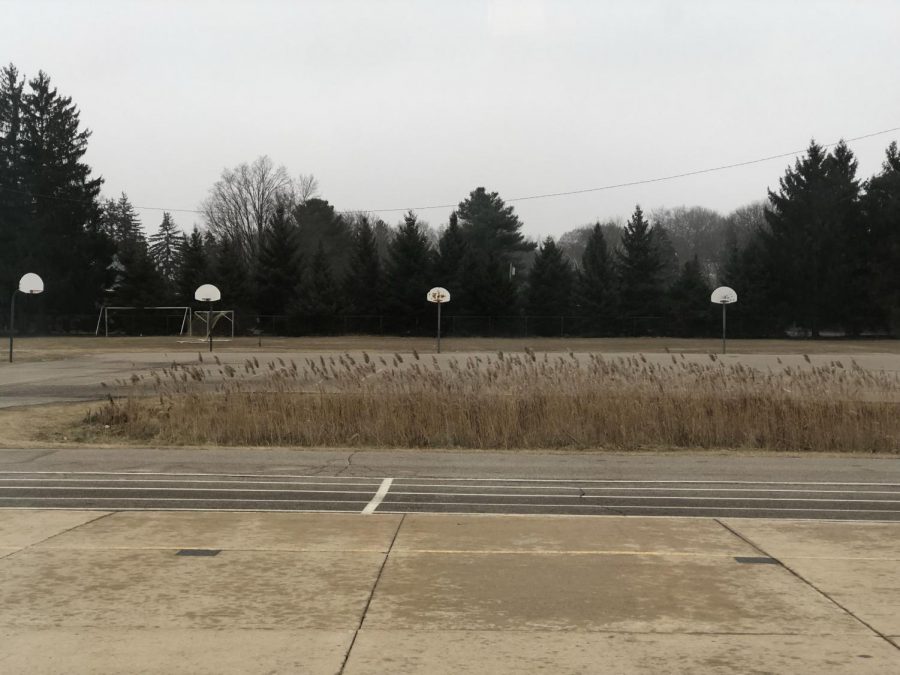El Nino: the Culprit for Michigan’s Warm Winter Weather
West Middle School experiences rainy weather well into January.
January 15, 2019
There’s no doubt that this 2018-19 winter in Michigan appears to be milder than usual. It has been an uneventful season of light jackets, bitter wind, and lots and lots of rain. But what makes this year so much warmer than the past? The El Nino, an infamous weather-warmer, is to blame.
The dictionary defines El Nino (el-NEEN-yo) as “an irregularly occurring and complex series of climatic changes affecting the equatorial Pacific region and beyond every few years, characterized by the appearance of usually warm, nutrient-poor water off northern Peru and Ecuador, typically in late December.” In other words, when surface water in the Pacific Ocean becomes warmer than usual, an El Nino is declared. El Ninos occur irregularly, once anywhere from every two to seven years.
Why does the El Nino phenomenon occur? That is a mystery to many. Michael Ugulini, a certified educator from www.enotes.com, says that the El Nino “is caused by warmer water in the Pacific Ocean. This water is warmer because as trade winds lessen or reverse their direction, winds from the west push warm surface water to the east in the direction of the continent of South America. Therefore, there is less cold water pulled up from below as a result of this increase in warmer water.”
The increase in temperature in surface water in the Pacific Ocean creates warmer wind currents that blow across the world, greatly affecting the Midwest. The Great Lakes region and Michigan have higher chances of warmer and drier weather in the winter during an El Nino. “The chances of the milder winter increases as the water temperature increases,” says Mark Torregrossa from www.mlive.com. During an El Nino, Michigan should expect less snow and higher temperatures.
This winter El Nino affected West students in many ways, as well. Brady Price, a seventh-grader at W.M.S. states that “The lack of winter weather has been really disappointing because I was really looking forward to the winter season. I wanted to go sledding, and other winter activities, but I can’t do that because it hasn’t snowed enough since October.”
Josie Fillman, a seventh-grader at West, is also disappointed with the mild winter. “I was kind of hoping to get some snow up here in Michigan,” she says.
Many people get confused with the terms ‘El Nino’ and ‘La Nina.’ The difference is that they are exact opposites. An El Nino calls for warmer weather, water currents, and wind. A La Nina (la-NEEN-ya) is when surface currents in the Pacific Ocean are colder than usual. The La Nina causes colder and harsher weather all around the globe. In some places, precipitation increases, and there is a lot of rain. In others, conditions become extremely dry. A La Nina also occurs every two to seven years.
The El Nino is responsible for the mild winters in Michigan this year. All there’s left to do is hope for some snow one of these days.
Works Cited
Causes Of El Nino.” Enotes.com, Enotes.com, 2019, www.enotes.com/homework-help/describe-what-happens-produce-el-nino-phenomenon-351575.
Torregrossa, Mark. “El Nino Chance High for Winter, Michigan Needs to Watch This.” MLive.com, MLive.com, 13 Aug. 2018, www.mlive.com/weather/index.ssf/2018/08/el_nino_chance_high_for_winter.html.
Torregrossa, Mark. “Possible Big Impact on Michigan Winter: El Nino May Have Surged in Strength Recently.” MLive.com, MLive.com, 12 Nov. 2018, www.mlive.com/weather/index.ssf/2018/11/possible_big_impact_on_michiga.html.
